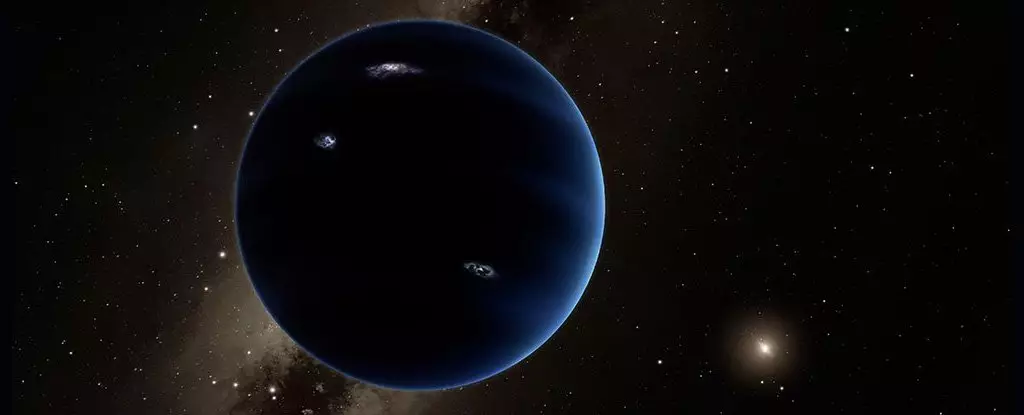The search for Planet Nine has become a tantalizing puzzle for astronomers. Nestled somewhere beyond Pluto’s orbit, this hypothetical planet has managed to elude our detection efforts. Its existence is shrouded in darkness, coldness, and vast distances, making it a formidable challenge to find. Moreover, our understanding of its precise location remains vague, with only a faint inkling of its whereabouts. The reasons behind this elusive nature of our cosmic neighbor are multifaceted, ranging from our limited observational capacity to the possibility that it might not exist at all. However, a recent study by physicists Katherine Brown of Hamilton College and Harsh Mathur of Case Western Reserve University offers a captivating alternative perspective – perhaps the anomalies we attribute to Planet Nine could be indications of a missing piece in our current understanding of gravity.
Newton’s laws of universal gravitation have undoubtedly been invaluable in our exploration of the celestial realm. Nonetheless, they are not without their imperfections. To address the shortcomings of Newtonian gravity, Einstein introduced the theory of general relativity, which provided a more comprehensive framework. Nevertheless, there are still gaps in our understanding, and this is where Modified Newtonian Dynamics (MOND) steps in. MOND presents an alternative gravitational model that suggests different gravitational effects manifest when Newtonian gravitational acceleration drops below a specific threshold. Unlike dark matter, which is often invoked to explain peculiar galactic behavior, MOND offers an alluring alternative by describing gravitational phenomena, such as unexpected rotation curves and lensing effects, without the need for additional matter. However, MOND’s application on smaller scales has received limited attention, until now.
While MOND has proven successful in elucidating galactic-scale observations, the idea that it could have noticeable ramifications on the outer Solar System came as a surprise. The evidence supporting the existence of Planet Nine stems from peculiar orbital clustering observed in this region. These clusters are formed by countless small icy rocks that meander along vast circumstellar paths. The prevailing notion was that this clustering phenomenon might not align with the predictions of MOND. To test this hypothesis, Brown and Mathur embarked on an investigation, employing MOND to model the orbits of objects in the outer Solar System. Astonishingly, their simulations yielded outcomes that mirrored the observed clustering patterns. According to the MOND theory, some objects in the outer Solar System should gradually align themselves with the gravitational field of the Milky Way galaxy over time.
While the results of Brown and Mathur’s study offer fascinating insights, they do not conclusively determine whether MOND or Planet Nine is responsible for the unusual behavior of these distant rocks. Insufficient data impedes our ability to confidently discern one from the other. Nevertheless, the inclusion of MOND as a plausible explanation injects a new element into the already intricate search for Planet Nine. In order to gain a deeper understanding and potentially corroborate or dismiss the MOND hypothesis, further investigations employing dynamical simulations are required.
The quest to unravel the mysteries of Planet Nine continues to be an arduous undertaking for the astronomical community. Its ability to evade detection, combined with its enigmatic characteristics, has left scientists grappling with countless uncertainties. Nonetheless, the work of Brown and Mathur heralds a new chapter in this ongoing saga. By considering alternative gravitational models such as MOND, we expand our understanding of the cosmos and challenge the existing paradigms. While the true nature of Planet Nine remains elusive, continued research and exploration offer hope that one day we will uncover the secrets that lie in the outer reaches of our Solar System.


Leave a Reply